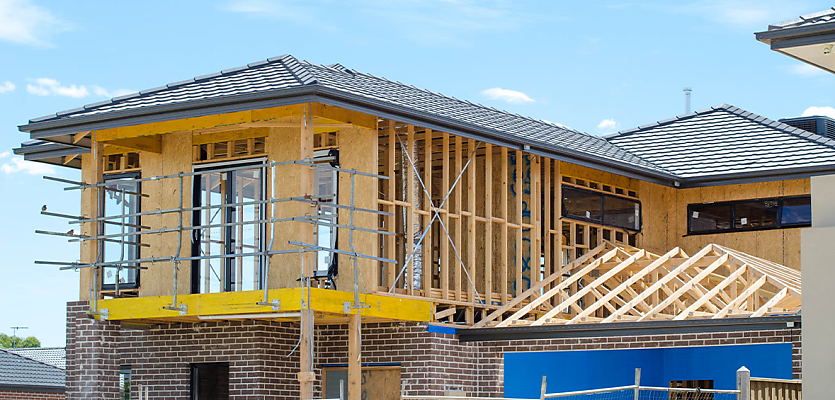The number of homes for which construction began decreased during the last quarter of 2024, further distancing Australia from the levels needed to meet the national housing target.
Recent data from the Australian Bureau of Statistics (ABS) has shown that the total number of dwellings commenced in seasonally adjusted terms fell 4.4 per cent to 41,911 over the December quarter.
The quarterly reduction was largely due to a decline in commencements for private sector houses, which fell by 6.1 per cent to 21,136 during the December quarter, following a 6 per cent increase in commencements in the September quarter.
Commencements for other private sector residential dwellings, which include townhouses, units and apartments, also decreased over the quarter, falling 5.6 per cent to 14,196 dwellings, following a 6.3 per cent increase in September.
Chief economist at Master Builders Australia, Shane Garrett, said that commencements for higher density homes reduced by 7.6 per cent over the quarter, which further worsened the already strained levels of new stock on the market.
“Higher density home building has been stuck at a low ebb for years, and the insufficient output of new stock here is a major culprit when it comes to deteriorating affordability in the rental market,” Garrett said.
Despite the decrease in home starts over the quarter, Garrett said that construction began on 168,300 new homes during 2024, representing a slight 2.2 per cent increase from levels in 2023.
While Garrett noted that this increase was supported by a 7.6 per cent rise in detached house commencements over 2024, he emphasised that higher-density house starts, in contrast, fell by 5.4 per cent to their lowest levels since 2011.
Garrett said that the latest figures for higher-density home commencements raised additional doubts about the feasibility of the National Housing Accord target of building 1.2 million homes by 2029.
“The performance of higher-density home building will be pivotal in determining whether or not we meet our Housing Accord targets. Today’s figures show that the struggle has got even tougher on this front,” he said.
Chief economist at the Housing Industry Association (HIA), Tim Reardon, said that Australia would need to build more than 250,000 homes annually to meet the national target of 1.2 million homes.
Reardon said that Australia has consistently built more than 200,000 homes each year, and added that labour shortages have compromised the nation’s building capacity.
“Home building is currently at the bottom of a cycle and is losing skilled workers to other industry sectors, which impedes future building capacity,” Reardon said.
“The more workers that are lost from the home building sector in this cycle, the harder and more expensive it will be to increase that capacity, as interest rates fall and activity picks up,” he added.
Following the housing affordability measures announced by the major parties last week, Reardon called on the next federal government to focus on providing financial support for those who decide to build a new home.
“Whether this is done through removing the imposts, such as lender’s mortgage insurance, or removing first home buyers from the established market and incentivising them to build a new home, can increase the supply of new homes,” he said.
Nevertheless, Reardon said that these short-term “easy-good” solutions would need to be supplemented by broader “hard-smart” policies addressing land supply, infrastructure costs, planning regimes, delays in home building, and tax reforms on new homes.
“An investment in infrastructure, or tax reform or reducing delays won’t impact on the price or supply of housing within an election cycle, but if they are sustained over a decade, they will begin to ease the cost of a new home,” he said.
Reardon noted that a failure to adopt these range of policies would result in the nation falling significantly short of the national housing target.
“HIA forecasts that only 983,530 new homes will commence construction over that five-year period, unless meaningful changes to remove the barriers to supply are made,” Reardon concluded.









You are not authorised to post comments.
Comments will undergo moderation before they get published.